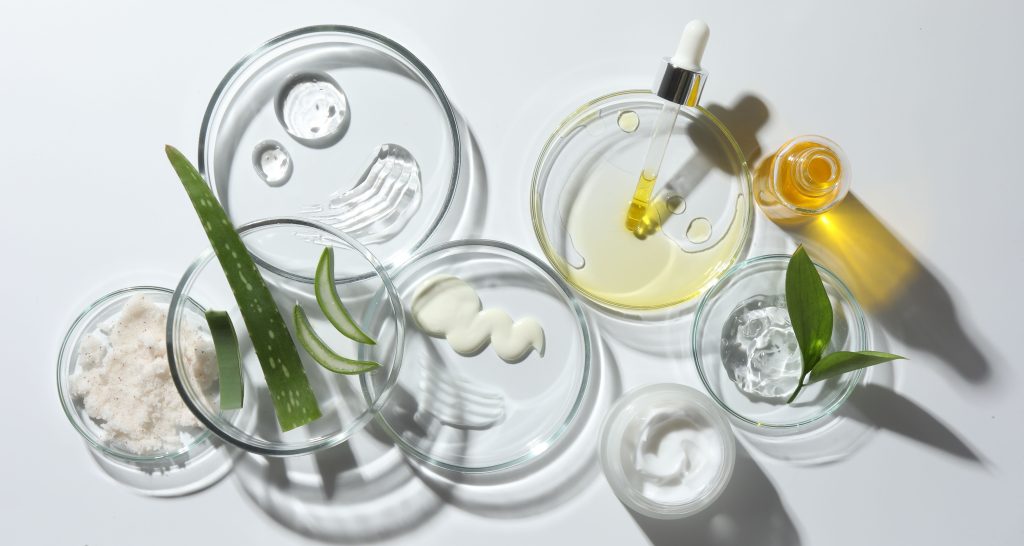In advanced cosmetic formulation, selecting the right active ingredients is only part of the challenge. Equally important is how these ingredients interact to ensure both biological efficacy and product stability. Natural vitamin E is widely recognized for its antioxidant benefits for skin, but when used in combination with carefully selected co-antioxidants, its effectiveness can be significantly amplified. These synergies not only support the skin’s defense against oxidative stress but also improve the longevity of the formulation.
Mechanisms of synergistic action between vitamin E and co-antioxidants in cosmetic formulations
Vitamin E, particularly in its natural form (D-alpha-tocopherol), functions as a biological antioxidant that protects skin lipids from peroxidation by neutralizing free radicals. However, during this process, vitamin E itself becomes oxidized, limiting its protective lifespan unless regenerated. This is where co-antioxidants come into play. Compounds such as vitamin C (ascorbic acid), polyphenols, and ferulic acid can regenerate oxidized vitamin E, restoring its active form and extending its protective function.
These interactions create a cycle of mutual reinforcement. For example, vitamin C donates electrons to regenerate tocopherol, restoring vitamin E’s antioxidant power, which can then continue neutralizing free radicals. Polyphenols and other plant-based co-antioxidants not only support this regeneration process but also contribute their radical-scavenging abilities, adding layers of protection at the cellular level. The result is a formulation that is more effective in delaying signs of skin aging, such as fine lines, hyperpigmentation, and loss of elasticity.
Additionally, the synergistic action between vitamin E and co-antioxidants helps protect sensitive ingredients within formulations from degradation. As a result, vitamin E benefits for skin go beyond antioxidant protection; they also contribute to extending the shelf life and ensuring consistent performance of anti-aging products, allowing the formulation to deliver its intended effects throughout its use.
Enhancing oxidative stability in cosmetic products: the role of combined antioxidants
Beyond their biological effects on the skin, antioxidants also serve a technological function in preserving the integrity of cosmetic products. Oils and emulsions commonly used in anti-aging creams are vulnerable to oxidative degradation, which can result in unpleasant odors, color changes, and reduced efficacy. Vitamin E is often used to stabilize these lipids, but its effectiveness alone may not be sufficient for long-term protection, particularly in formulations exposed to air, light, or high temperatures.
When used in combination with other antioxidants, vitamin E’s ability to maintain product stability increases markedly. For instance, combining tocopherol with rosemary extract creates a multi-faceted antioxidant defense system. Rosemary extract yields hydrogen atoms to tocopherol radicals, helping enhance its stability.
The selection of combinations of antioxidants is critical in formulation development. Factors such as solubility, pH compatibility, and molecular weight must be carefully balanced to ensure uniform distribution and activity within the product matrix. When properly formulated, these blends not only protect active ingredients but also maintain the sensory qualities of the product, such as texture and color, which are essential for consumer acceptance in the cosmetic market.
Selection criteria for co-antioxidants to maximize vitamin E performance in anti-aging applications
The effectiveness of antioxidant synergy depends largely on the compatibility and functional interplay of its components. When selecting co-antioxidants to support vitamin E, formulators need to consider several key criteria:
- Redox potential: co-antioxidants must be capable of regenerating oxidized vitamin E. This requires a lower redox potential, which allows them to act as electron donors.
- Solubility profile: since vitamin E is lipophilic, lipid-soluble co-antioxidants are ideal for enhancing performance in oil-based formulations, while water-soluble antioxidants, such as vitamin C, may be paired in emulsions to offer protection across both phases.
- Stability under formulation conditions: co-antioxidants should remain stable under the expected conditions of production, storage, and use, avoiding pro-oxidant effects or degradation.
- Skin compatibility: particularly in anti-aging applications, co-antioxidants must be non-irritating and preferably offer additional skin benefits, such as anti-inflammatory or brightening properties.
Btsa’s Bioxan® Blends were developed with these criteria in mind. These customized antioxidant systems are designed to enhance the stability and efficacy of cosmetic products, including those focused on anti-aging. Based on natural antioxidants, Bioxan® Blends combines tocopherols with a carefully selected mix of natural co-antioxidants, such as vitamin C or rosemary extract, tailored to each formulation’s specific requirements. These synergistic effects of the antioxidants not only protect the product from oxidation but also reinforce the biological effects of vitamin E on the skin, offering dual functionality in a single solution.
Incorporating Bioxan® Blends into anti-aging cosmetics allows manufacturers to formulate high-performance, stable products supported by natural science and backed by Btsa’s experience in antioxidant development.
We continue to provide reliable solutions that address both formulation challenges and consumer expectations in the cosmetics sector.

